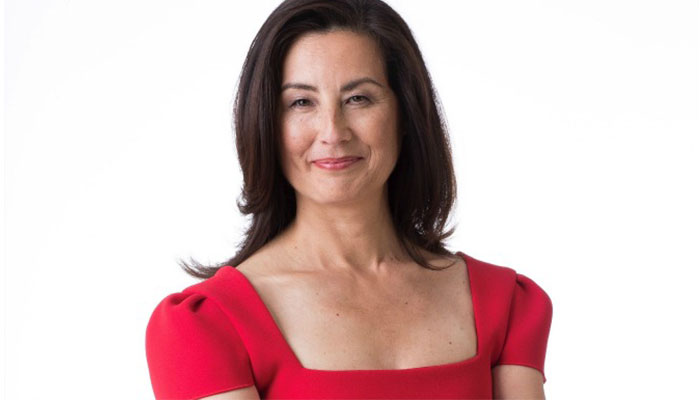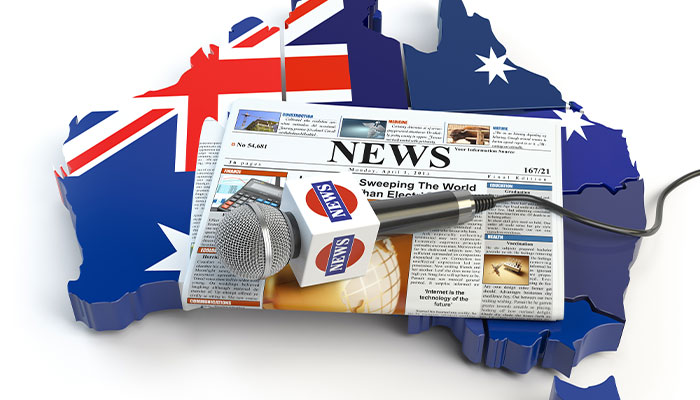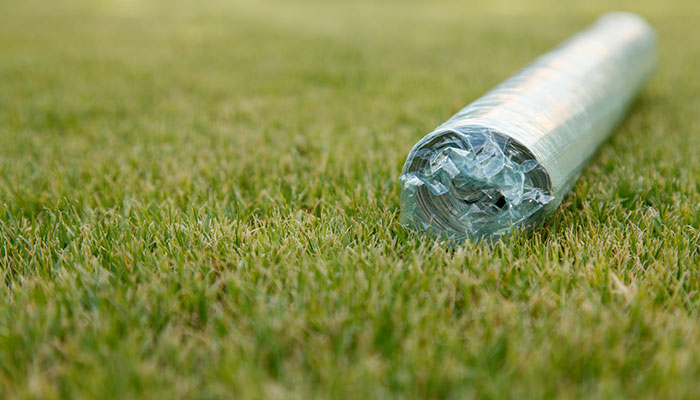A report into cultural diversity in the media has laid bare an overwhelming Anglo-Celtic dominance of Australian television news and current affairs, both in front of and behind the cameras.

All the same: a new report has found that more than 75 per cent of presenters, commentators and reporters on free-to-air TV are of Anglo-Celtic background, with the highest proportion seen on Channel 9.
The 42-page report, Who Gets to Tell Australian Stories?, found that every national news director of Australia’s free-to-air networks is a man of Anglo-Celtic background, and that more than three-quarters of presenters, commentators and reporters on free-to-air television are also of Anglo-Celtic ancestry.
Of the 32 most senior news management roles across the country, 28 are held by people of Anglo-Celtic heritage, including all of the nine women who have risen to these leadership positions.
The report found that the 39 board members across the television networks are also overwhelmingly Anglo-Celtic, with only one Indigenous board member (at SBS) and three of non-European background.
“Where these statistics really bite is when you look at who is telling and framing Australia’s stories, and then directly compare that with who Australians are,” says the leader of the research project, Macquarie University Professor of Media Catharine Lumby.
“ABS data shows that 58 per cent of Australians have an Anglo-Celtic background, 21 per cent have a non-European background, 18 per cent have a European background, and 3 per cent have an Indigenous background.”
This matters because news is our fourth pillar of democracy - it is there to inform us and to tell Australian stories, for all Australians and from many perspectives.
While Anglo-Celtics are over-represented on television news and current affairs, representing 75.6 per cent of presenters, reporters and commentators, non-Europeans are seriously under-represented at 9.3 per cent. Europeans comprised 13 per cent of on-air talent, and Indigenous people 2.1 per cent.
A gender breakdown showed there were more women than men in front of the camera except when it came to those of non-European heritage.
“This all matters because news and current affairs media is our fourth pillar of democracy; it is there to inform us, and it is also there to tell Australian stories – and it should be telling stories for all Australians and from many perspectives,” Lumby says.
“Despite the issues with their business models, free-to-air TV is still watched by a lot of people; it is still the medium that draws people together as a mass audience.
“As a visual medium, it literally represents us.”
19,000 items analysed
For their report, researchers analysed news and current affairs broadcast from 1-14 June 2019 across all free-to-air networks. The sample included 81 news programs, about 19,000 news and current affairs items, and 270 presenters, reporters and commentators who appeared nearly 35,000 times on television screens during the two weeks.
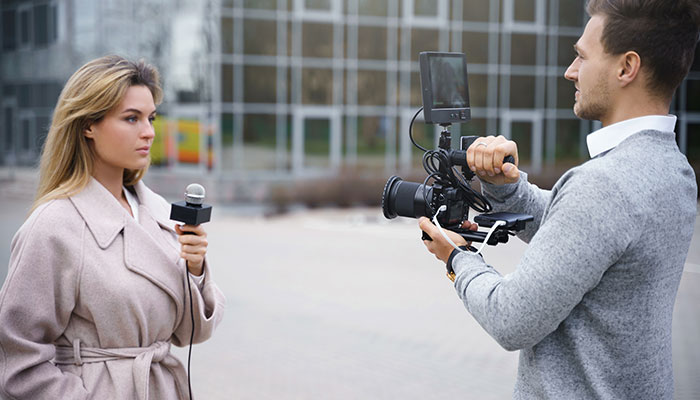
Both sides: the report found a lack of cultural diversity in front of and behind the camera with on-air and crew being mainly of Anglo-Celtic heritage.
The study found Channel 9 had the highest proportion of on-air talent of Anglo-Celtic background (87.8 per cent), followed by Channel 7 (72 per cent), Channel 10 (67.1 per cent) and the ABC (57.2 per cent).
The other cultural categories used in the study were European, non-European and Indigenous, with SBS dominated by non-Europeans (76.6 per cent), but all other networks, including the national broadcaster the ABC, having less than 10 per cent non-Europeans among their on-air talent. Channel Nine was lowest at 2.9 per cent. On SBS, less than 1 per cent were Anglo-Celtic.
During the two weeks, people of indigenous background did not appear as presenters, reporters or commentators on Channel 7, and one reporter appeared on Channel 9. On Channel 10 and the ABC they were 5.4 and 5 per cent respectively of on-air talent, but only 0.2 per cent on SBS.
- VIDEO: Rising whale numbers a bonus for Sydney citizen scientists
- New hope as dementia reverses memory loss in mice
Given its popularity, morning and breakfast news television came under particular scrutiny and was found to have an ‘extremely low’ representation of Indigenous and non-European presenters, reporters and commentators – in the case of Channel 10 there was none, while Channel 7 had no Indigenous presence and Channel 9 had 0.1% of each.
“This is significant because breakfast TV has often been the progenitor of some pretty heated debates around Indigenous people and the Muslim community.” Lumby says. “What you often get is a panel of white men and women pontificating on the experiences of communities they have no contact with and no understanding of – and I think that’s offensive.”
‘Alarming’ Indigenous absence
Lumby was joined by researchers from Macquarie and three other universities to conduct the project, initiated by the not-for-profit Media Diversity Australia.
In a breakdown by state and territory, the data revealed an ‘alarming’ absence of any indigenous on-screen presence across most of the country, in Queensland, Victoria, South Australia, Tasmania and the Northern Territory. The latter three also had no non-Europeans appear during the two weeks.
We all walk around with unconscious bias and that is why you need to shake people up out of their confortable chairs, and get them to see that their perspective is not the only perspective.
Tasmania came last for diversity, with 85.7 per cent being Anglo-Celtic and the rest of European heritage. Western Australia had the lowest Anglo-Celtic contingent of on-air talent at 70 per cent, while NSW had the highest proportion of non-Europeans at 14.2 per cent and the ACT of Indigenous talent at 7.7 per cent.
Journalists themselves are aware of the issue. Of more than 300 who self-selected to complete an online survey as part of the study, 70 per cent rated the representation of culturally diverse men and women in the media industry as poor or very poor. As well, nearly 86 per cent of non-European background respondents believe that having a culturally diverse background is a barrier to career progression – “and that is the group that emerges as the least-represented in news and current affairs television, relative to the percentage of the population that they are,” Lumby says.
Australia trails US and UK
The study shows that the Australian news media is lagging behind the United States and the UK, where policies have been adopted to increase cultural diversity and are delivering on-the-ground results.
The report says that similar change in Australia will require meaningful collection of data on cultural diversity among news media staff, and the establishment of targets to increase diversity.
Workforces, too, need to be on board.
“You’ve got to, from the leadership down, educate and inform your workforce about the benefits of cultural diversity,” Lumby says.
“We all walk around with unconscious bias and that is why you need to shake people up out of their comfortable chairs, and get them to see that their perspective on the world is not the only perspective.”
Leaders ambivalent
However, based on in-depth interviews with senior news and current affairs leaders from all the free-to-air networks, the report said that while most leaders recognised their outlet failed to reflect their audience, there was ambivalence towards having formal diversity and inclusion policies.
- PODCAST: Now everyone is both a producer and consumer of news
- The new taboos: how COVID-19 is changing our social world
“Some of the interviewees made statements like, ‘Oh I think things are improving’. But how would you know things are improving when you don’t even know what your cultural diversity baseline is?”, Lumby says.
“You can’t just point to Waleed Aly and say, ‘Look, we’ve got one’.”
Targets are the key
Lumby says while there is some generalised good will towards the idea of increasing cultural diversity – “I am not suggesting everyone in the media industry is opposed to it, or hostile to it, and some of them even have helpful suggestions about how to increase it,” she says – there is a general resistance to setting targets.
“Now, targets are not quotas, which are mandated. Targets don’t bind you to anything, but they keep you accountable, because they ask you to measure something, and to review and evaluate it, and to see how you are going.
“We don’t even collect that [media cultural diversity] data in Australia, so we have got nothing to benchmark it against, and that is why we did this research. We are saying, this is the benchmark, and now what do you want to do with this?”
Commercial benefits of diversity
Who Gets to Tell Australian Stories? points to compelling evidence in studies such as McKinsey’s Diversity Wins – How Inclusion Matters Report that cultural diversity brings “clear and multiple benefits to an organisation”, not least through the creative solutions that come from people challenging each other’s different perspectives.
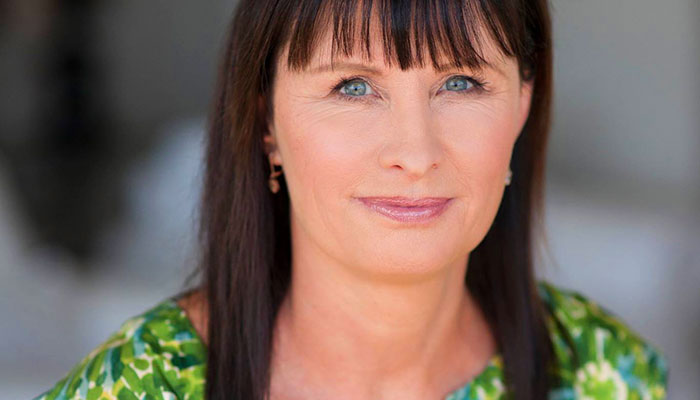
Win-win: wider cultural diversity is not only about social justice, says Lumby (pictured) - it's about expanding your audience, and strengthening the bottom line with a more multicultural cast of characters in advertising.
While a culturally diverse workforce would help ensure “that all Australians feel represented in the way stories are sourced, told and prioritised,” the report says, Lumby also highlights the business case.
“This isn’t about just social justice and touchy-feely stuff, this is about the bottom line,” she says.
“In the media, particularly in an increasingly economically constrained environment, your job is to diversify your audiences – you are competing for eyeballs, and you are going to expand your audiences if you are speaking to a wider group of people, and to do that you have got to be able to tell stories that resonate with them.
“What you will see in advertising all the time now is a far more multicultural cast of characters. Advertisers are not doing it because they are nice people; they are doing it to sell their products – so news and current affairs is still living in an Anglo male world that really belongs in the 1960s in many respects.”
Catharine Lumby is a Professor in the Department of Media, Music, Communication and Cultural Studies.

